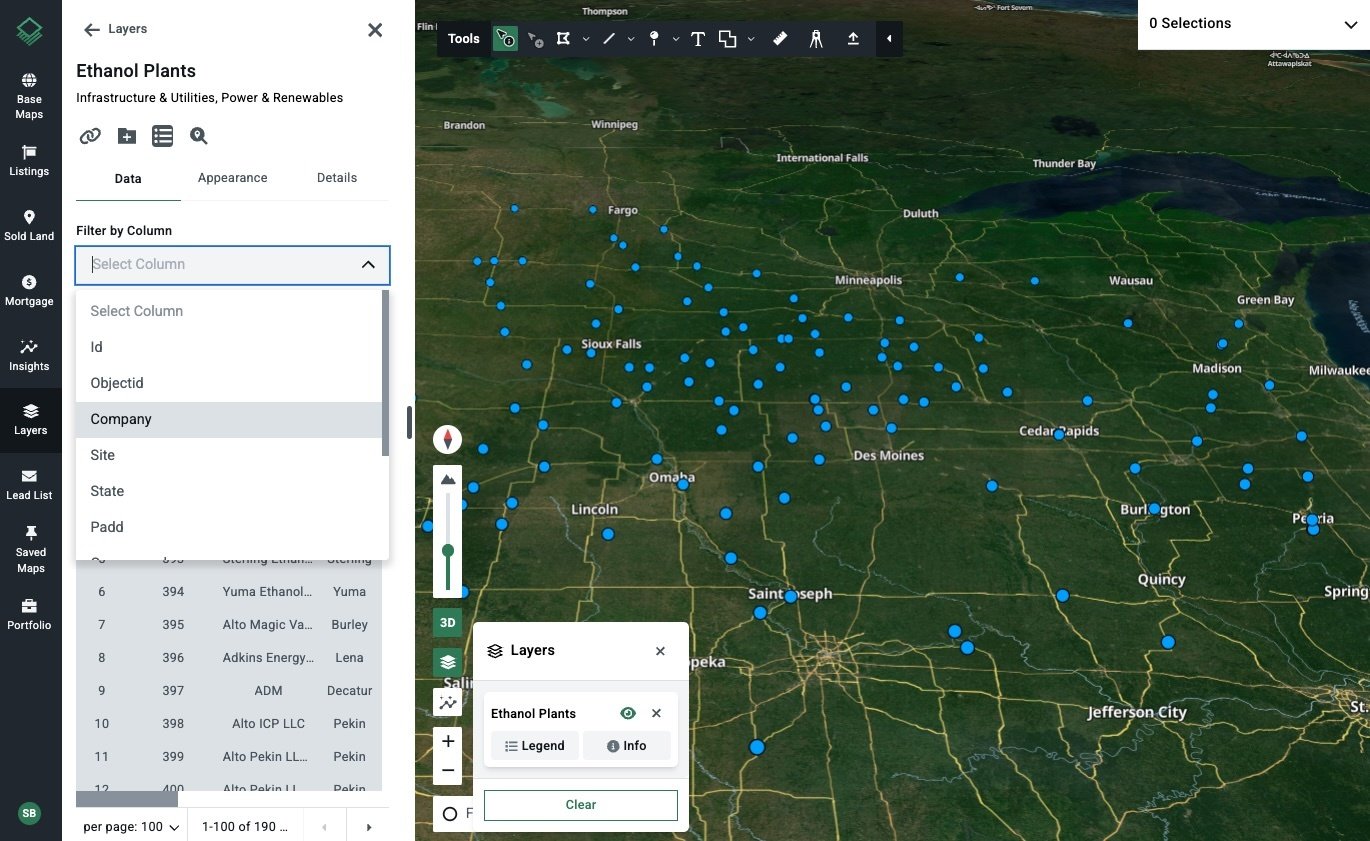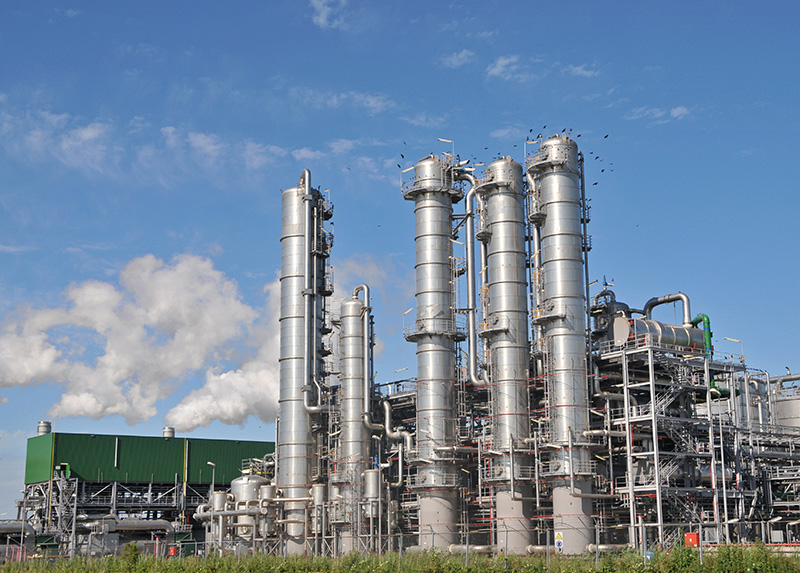As demand for renewable fuel grows, ethanol plants are becoming powerful drivers of crop demand, land value shifts, and regional development.
The Ethanol Plants map from Acres.com gives you a strategic view of where this growth is happening—helping land professionals identify prime investment areas, anticipate market changes, and plan more effectively.
What are Ethanol Plants?
Ethanol is a renewable fuel derived from biomass sources like corn, sugarcane, and wood chips. Ethanol plants convert these materials into ethanol fuel through a fermentation process, creating a versatile biofuel.
Map of U.S. Ethanol Plants
Available in the Layer Library, Acres’ interactive Ethanol Plants map lets you visualize ethanol infrastructure across the country. Whether you're scouting for investment opportunities or analyzing land value, this tool provides powerful insight, including:
- Company/Ownership Details
- Site Name
- State/Location
Connect with our sales team today and begin exploring infrastructure near your land!

Acres’ nationwide ethanol plants data is derived from the Energy Information Administration (EIA).
Considerations for Landowners and Investors
Potential Benefits
- Increased Demand for Local Crops: Proximity to a corn ethanol plant or biofuel plant can boost local demand for feedstocks, potentially creating new market opportunities.
- Economic Development: These facilities can bring direct jobs to rural regions and stimulate local economies through associated industries and services.
- Collaborative Opportunities: Landowners may find partnerships with ethanol plants for biomass supply, waste reuse, or other ventures.
Potential Drawbacks
- Property Value Impacts: Proximity to industrial activity can influence residential property values, especially if odor, traffic, or environmental issues arise.
- Water Usage: Ethanol plants use a lot of water. Landowners should think about the effects on local water and how the plant will treat and discharge wastewater.
- Safety Concerns and Risks: While plants have safety protocols, accidents can happen. Landowners should be aware of emergency response plans and potential risks (fires, spills, leaks, etc.).
Tip: Ethanol plants and biodiesel plants are similar in input production, but different in outcome production. Read more about the differences and considerations in our biodiesel blog.
Final Thoughts
Infrastructure like ethanol refineries and biomass fuel facilities can shape everything from land use to local economies. With Acres’ interactive Ethanol Plants map, you can gain a unique edge in evaluating the presence and potential impacts of these sites on your land.
